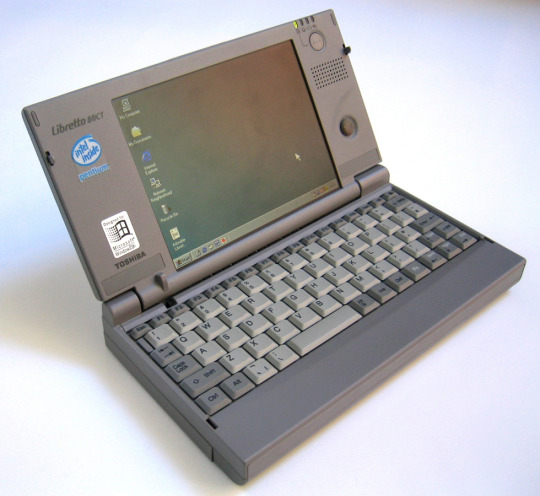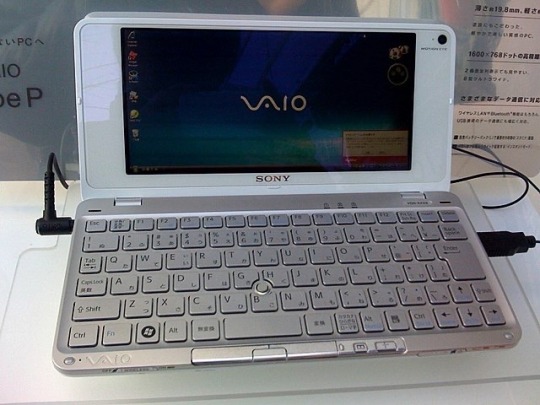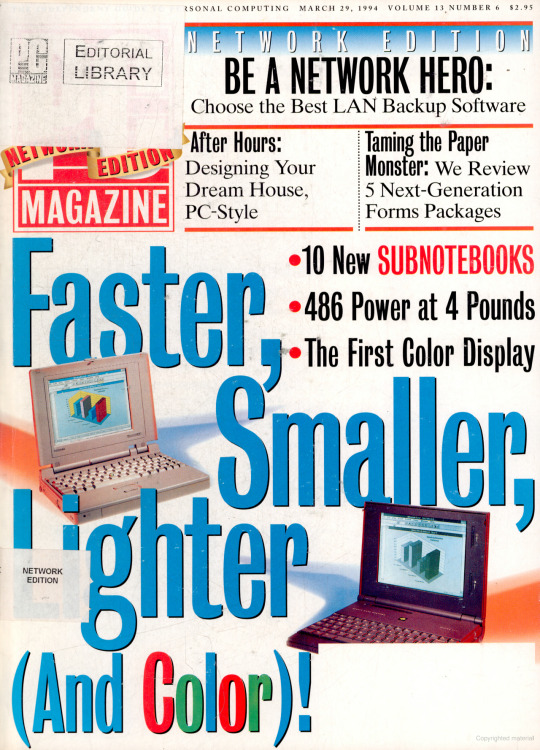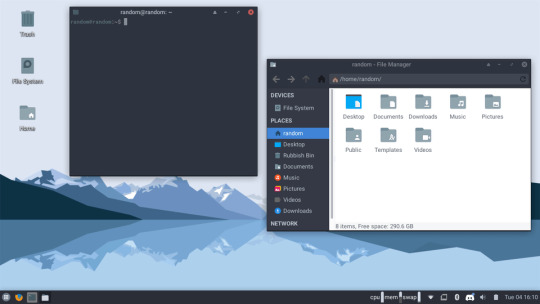#subnotebook
Explore tagged Tumblr posts
Text
4. Juli 2009
Brighton-Urlaub mit Gerätekampf
Ich zeige meiner Mutter meinen liebsten Urlaubsort: Brighton in Südengland. Wir haben uns für fünf Tage im Hotel Pelirocco eingemietet, es ist hochsommerlich heiß.
Während Mama im Fernsehen nach Wimbledonbildern sucht (sie guckt leidenschaftlich gern Tennis), kann ich endlich meine Kommunkationstechnik ohne Behinderung ausleben. Denn erst kam ich nicht ins Internet, trotz superkräftigem WLAN-Signal und unter Aufsicht eines Hotelangestellten korrekt eingegebenem Passwort (irgendwo auf der siebten Ebene hatte eine Einstellung nicht gepasst, wie das halbstündige Telefonat mit meiner persönlichen Technikbetreuung daheim ergab), dann erkannte Freund Subnotebook den Speicherchip meines Fotoapparats nicht mehr (der ca. elfte Versuch brachte Besserung), dann war der Akku des Subnotebooks ob all der Anstrengung alle, und ich hatte den Adapter daheim liegenlassen (der freundliche Neighbourhood-Elektrohändler in einem nahe gelegenen Laden verkaufte mir einen neuen). Sogar mein Berufs-Blackberry tut wieder, was er soll, nachdem er mir Zugang nur gegen Eingabe des PUK gewähren wollte: Ich habe immer noch nicht herausgefunden, wie ich die Tastensperre manuell aktiviere – nein, das steht nicht in der Gebrauchsanweisung – und so hatte ich im weggesteckten Blackberry anscheinend irgendwelche PINs eingegeben. Meine persönliche Technikbetreuung daheim suchte mir fernmündlich in den Unterlagen die PUK heraus. Allerdings ist nach all den Nottelefonaten mein privates Handy nahezu stromlos, dessen Akku sonst gut und gerne zwei Wochen hält – weswegen ich für die vier Tage Abwesenheit kein Ladekabel mitgenommen habe.
Erstveröffentlicht im Blog Vorspeisenplatte.
(die Kaltmamsell)
4 notes
·
View notes
Text
Tag 20: Mächtige Laptops
Dies sind die Vorgänger der wirklich kompakten Laptops wie das MacBook Air oder die Ultrabook-Klasse im Wintel-Bereich. Das Ti Book und das Sony Vaio Subnotebook sind wunderschöne Beispiele für mächtige Laptops in kompakten Gehäusen.
Der zwanzigste Beitrag in meiner Reihe von Beiträgen zur Neugestaltung der Ausstellung in meinem Computermuseum. Heute und an weiteren 13 Tagen stelle ich die Zusammenstellung meiner Ausstellungsstücke vor. Was ihr hier seht sind zwei sehr mächtige Laptops. Das große ist das berühmte Ti Book. Nein, es gehört nicht zur Familie der TIE Fighter, wie man sie aus Star Wars kennt. Es ist das erste…

View On WordPress
2 notes
·
View notes
Text

Start Me Up: 30 years of Windows 95 - @commodorez and @ms-dos5
Okay, last batch of photos from our exhibit, and I wanted to highlight a few details because so much planning and preparation went into making this the ultimate Windows 95 exhibit. And now you all have to hear about it.
You'll note software boxes from both major versions of Windows 95 RTM (Release To Manufacturing, the original version from August 24, 1995): the standalone version "for PCs without Windows", and the Upgrade version "for users of Windows". We used both versions when setting up the machines you see here to show the variety of install types people performed. My grandpa's original set of install floppies was displayed in a little shadowbox, next to a CD version, and a TI 486DX2-66 microprocessor emblazoned with "Designed for Microsoft Windows 95".

The machines on display, from left to right include:
Chicago Beta 73g on a custom Pentium 1 baby AT tower
Windows 95 RTM on an AST Bravo LC 4/66d desktop
Windows 95 RTM on a (broken) Compaq LTE Elite 4/75cx laptop
Windows 95 OSR 1 on an Intertel Pentium 1 tower
Windows 95 OSR 1 on a VTEL Pentium 1 desktop
Windows 95 OSR 2 on a Toshiba Satellite T1960CT laptop
Windows 95 OSR 2 on a Toshiba Libretto 70CT subnotebook
Windows 95 OSR 2 on an IBM Thinkpad 760E laptop
Windows 95 OSR 2.5 on a custom Pentium II tower (Vega)

That's alot of machines that had to be prepared for the exhibit, so for all of them to work (minus the Compaq) was a relief. Something about the trip to NJ rendered the Compaq unstable, and it refused to boot consistently. I have no idea what happened because it failed in like 5 different steps of the process.
The SMC TigerHub TP6 nestled between the Intertel and VTEL served as the network backbone for the exhibit, allowing 6 machines to be connected over twisted pair with all the multicolored network cables. However, problems with PCMCIA drivers on the Thinkpad, and the Compaq being on the blink meant only 5 machines were networked. Vega was sporting a CanoScan FS2710 film scanner connected via SCSI, which I demonstrated like 9 times over the course of the weekend -- including to LGR!
Game controllers were attached to computers where possible, and everything with a sound card had a set of era-appropriate speakers. We even picked out a slew of mid-90s mouse pads, some of which were specifically Windows 95 themed. We had Zip disks, floppy disks, CDs full of software, and basically no extra room on the tables. Almost every machine had a different screensaver, desktop wallpaper, sound scheme, and UI theme, showing just how much was user customizable.
@ms-dos5 made a point to have a variety of versions of Microsoft Office products on the machines present, meaning we had everything from stand-alone copies of Word 95 and Excel 95, thru complete MS Office 95 packages (standard & professional), MS Office 97 (standard & professional), Publisher, Frontpage, & Encarta.
We brought a bunch of important books about 95 too:
The Windows Interface Guidelines for Software Design
Microsoft Windows 95 Resource Kit
Hardware Design Guide for Windows 95
Inside Windows 95 by Adrian King
Just off to the right, stacked on top of some boxes was an Epson LX-300+II dot matrix printer, which we used to create all of the decorative banners, and the computer description cards next to each machine. Fun fact -- those were designed to mimic the format and style of 95's printer test page! We also printed off drawings for a number of visitors, and ended up having more paper jams with the tractor feed mechanism than we had Blue Screen of Death instances.

In fact, we only had 3 BSOD's total, all weekend, one of which was expected, and another was intentional on the part of an attendee.

We also had one guy install some shovelware/garbageware on the AST, which caused all sorts of errors, that was funny!
Thanks for coming along on this ride, both @ms-dos5 and I appreciate everyone taking the time to enjoy our exhibit.

It's now safe to turn off your computer.
VCF East XX
#vcfexx#vcf east xx#vintage computer festival east xx#commodorez goes to vcfexx#windows 95#microsoft windows 95
221 notes
·
View notes
Text




Lupin’s subnotebook in Missed by a Dollar
13 notes
·
View notes
Text
queerstudies malware subnotebook
I'm stealing this from Twitter

Here's the link
I am a high-definition gateway drug body double!
30K notes
·
View notes
Photo

Toshiba Libretto 50CT
#toshiba#toshiba libretto#subnotebook#computers#electronics#technology#microsoft#microsoft windows#windows 95#vintage#1990s
12 notes
·
View notes
Text

Sony Vaio P Series
185 notes
·
View notes
Text
25. Mai 2006
Polen – eine Studienreise (mit dem schnuckeligen Subnotebook)
(Fürs Techniktagebuch gekürzte Version dieses Blogbeitrags: www.vorspeisenplatte.de/speisen/2006/05/polen-eine-studienreise.htm, fehlende Umlaute sind der polnischen Tastatur geschuldet.)
Erst habe ich mich in diesem Hotel-Moloch selbst erfolglos nach einem oeffentlichen Internet-Zugang umgeguckt, dann doch an der Rezeption gefragt. Und siehe da, beziehungsweise hurra, im Keller, hinter den sieben masurischen Bergen, bei den sieben masurischen Zwergen, zwischen Putzkammerl und Klo, gibt es einen Rechner mit Internet-Zugang. Links neben mir steht aufgeklappt das “schnuckelige Subnotebook”, von dessen Bildschirm ich Folgendes abschreibe.
(Das Abgeschriebene kann man im Originalbeitrag nachlesen.)
Mehr an Eintrag geht leider nicht, unter den etwa 15 Rentner-Reisegruppen in diesem Hotel gibt es dann doch mehr als einen, der den einzigen Internetzugang nutzen will. Mal sehen, ob morgen frueh um sechs was geht.
(die Kaltmamsell)
3 notes
·
View notes
Photo

PC Magazine March 29, 1994
The “subnotebooks” examined in this issue, while improved from the year before, were still seen as somewhat compromised.
19 notes
·
View notes
Photo

Current project: Fixing up this second Toshiba Libretto. #libretto #toshibalibretto #subnotebook #Windows98 https://instagr.am/p/CaLENinJ6Cw/
4 notes
·
View notes
Photo




Old laptops booting from PCMCIA
I recently mentioned PCMCIA linear memory cards (both SRAM and flash) that existed before PCMCIA controllers started to support IO devices and ATA. I used such an SRAM card in my Olivetti Quaderno subnotebook instead of its failed hard drive. Quaderno boots DOS from the internal ROM, loads a driver to support SRAM and allows using it as an additional drive. However, there were also laptops that supported booting from PCMCIA cards, and I am surprised that this feature was not uncommon.
Certain 386/486 laptops with Phoenix BIOS have “PCMCIA” in the boot device list (in addition to “hard drive” and “floppy drive”). These support just linear flash/SRAM cards and let you boot DOS out of the card mapped as A:. Everything works just fine and you don’t need to load any PCMCIA driver. ATA PCMCIA and CompactFlash drives are not supported here – they are ignored by the BIOS module.
The laptop with AMI BIOS could have an optional “PCMCIA Boot Function” module. Once it was enabled and a card was inserted, the system booted from PCMCIA and mapped the card again as A:. However, the support was flaky – just good enough to load a proper PCMCIA driver during OS boot.
Laptops from large brands (like Toshiba) mostly didn’t support this feature. ThinkPads were an exception (486 and maybe also early Pentium ones). According to some owners, they even supported booting from ATA/CF cards. However, ThinkPads as well as the laptops with Phoenix and AMI software did not provide a driver-less access to PCMCIA cards if a user booted from a different device. It seems that there is only one known laptop that supported this – MiTAC 4022.
126 notes
·
View notes
Text
Tipikus
Tavalyelőtt elképzeltem, hogy milyen fasza lenne, ha a régi Asus Eee PC subnotebook-ra föltennék egy lightweight Linuxot, és akkor, amikor az erkélyen olvsasgatok, ránézhetnék erre-arra azzal a géppel. Van rendes billentyűzete, írogathatnék mindenféle bölcsességeket ide, mindenki nagy örömére.
Nagyjából másfél évig tartott, mire vettem új akkut hozzá és kiírtam az iso-t a pendrájvra.
Bootolnám föl, erre bekrepált a tápegység, mértem, nulla Volt jön ki belőle.
Újabb másfél év így ránézésre.
4 notes
·
View notes
Photo

[XFCE] Posted it on Unixporn first, was suggested this sub was more indicated. Trying to give new life to an old Thinkpad subnotebook
7 notes
·
View notes
Text
Little Computer Quest Part 1
Pre-history
Perhaps you will already be familiar with the ThinkPad X230. Built around the same chassis as the X220 with the addition of the then-new AccuType island keyboard, the X230 represents a bridge between the classic IBM lineage and the present day ThinkPad built around the Ultrabook philosophy, in the same way as the T430. The laptops are so similar that the X220's keyboard, while more typo prone and less rigid but with a far more familiar and sensible layout, can fit into the X230 either with a donated palmrest or by sanding the nubs from the X220's keyboard down.
Importantly, the X230 is perhaps the last 12.5 inch subnotebook produced with 35 watt low voltage CPUs, rather than the 15 watt ultra low voltage chips in the X240 and the T440. It's what gives the X230 the edge in performance against up to three generations of later X-series laptops and makes it such a favourite amongst technical users. Furthermore the X230, like the X220, has an IPS display option, which compared to the TN screens standard in most ThinkPads of the era that are horrible to look at from any angle, is very much welcomed.
However, such performance in such a constrained space comes with challenges. Typically the i5-3520M inside my fully specced out X230 idles at around 45°C, perhaps 15° over what one might consider a typical idle temperature. ThinkPads' embedded controllers and the fan modules consider fan speed of 7 levels, zero being off and 7 being full speed. Level 1 is very often tripped as its lower trigger is 48°, resulting in the fan distractingly being turned on and off every few seconds while doing particularly bursty tasks; in my case, browsing Twitter. The RPM of each level depends on the fan inside the heatsink fan module, which on my Delta fan is 3000 RPM, and unfortunately cannot be changed. The X220's fans have lower RPMs at lower levels but they often suffer from a problem where they develop a very high pitched whine.
As well, the X230 in my experience isn't really that great as a portable machine, as I tend to hunch over it using it out and about. The less durable parts of the machine also become obvious such as the part of the palmrest over the ExpressCard expansion slot where my original palmrest actually cracked, prompting me to replace it with the one from my X220. The back of the display lid has seen better days too, and the display bezel has been replaced with the X220 bezel as well.
I've been using the X230 as my around-the-house laptop for a couple of years; for one of those it was my primary computer; but often recently I have wished for something closer to the silent bliss of doing things on my phone, for browsing Twitter, watching videos and films, writing, perhaps even to read books or comics on.
The Problem
My search began for a portable machine that would be silent on all occasions, had an IPS screen, and was smaller and lighter than the X230. However I demanded that any prospective model also had a keyboard option, and furthermore culled any device that employed an Atom CPU, since those kinds of machines have been nothing but painful to use in my experience.
An iPad was once in the running but I swore these off for a few reasons. One was simply of cost, for any iPad compatible with Apple's also expensive keyboard cover options would run me far more than I have to spend. Longevity was also a concern; I am reluctant to touch any iOS device after the swift and brutal abandonment of my iPod touch 3rd gen, which was left behind at iOS 5 just three years after its introduction and despite the similarly specced iPhone 3GS receiving an update to iOS 6 anyway. As for Android tablets, I could always extend their lifespan with custom ROMs, but in 2020 that scene is even more of a wild west than before, and at the very least everyone knows that Android has not had a focus on tablets since the end of the Nexus programme; Samsung seems to have been the only manufacturer picking up the metaphorical tab, perhaps thanks to the huge collapse in demand for the kind of tablet Android shone on: affordable (or cheap, depending on how you looked at it) 7 inch slates like the Nexus 7 and the, suprisingly still going on, Amazon Fire.
In any case, neither would allow me to fulfil another desire in the prospective device: the ability to use the programs I already know how to use such as Glimpse or the GNU IMP and would want to use on the go, as well as play 2D games like VA11 Hall-A as an example.
The Lenovo IdeaPad Chromebook Duet stood out as an option. It, of course, runs Chrome OS but I considered whether Crostini and Android compatibility would be suitable for my needs. However once I learned about Google's "expiry date" pencilled in for every Chromebook, my obvious aversion to being locked into using Chrome, and ultimately the lackluster keyboard attachment with its short backspace, I decided against it, despite its very impressive battery life in the face of its reportedly underpowered MediaTek Helios SoC.
A note must be made here for the tragic case of the Pine64 PineTab. I would really have loved to have been able to choose this device, open and community developed with a keyboard option; sadly it just fell outside the performance requirements I desired. As another reviewer has already noted, if Pine64 developed a tablet based on the platform of the PineTab Pro they could have a real winner on their hands. It's just unfortunate that it does not exist at the time of writing.
The conclusion I ended up with through elimination is that the device would probably end up from the category of Intel-based tablets running Windows. The benefits seemed obvious: a platform familiar to me, with total choice over what operating system is running and driver updates that aren't held under ransom by device manufacturers.
The Results
In the end, three options came to the fore; the Surface Go 2, the ThinkPad Helix 2 and either generation, Haswell or Broadwell, of Dell's Venue 11 Pro. The Surface Go 2 is a very enticing device, made from the same blueprint as the rest of the Surface line, which I've been interested in since reading about the ill-fated Surface RT in the months leading up to Windows 8's release. Its keyboard and trackpad are well reviewed despite the short backspace, as was the PixelSense-branded display. However the Surface Go 2's starting model priced at £399 uses an Atom-based Pentium-in-disguise 4425Y and the upgrade to an Amber Lake-Y Core m3-8100Y sets you back another couple hundred quid, as does the keyboard cover. Used listings didn't do much to reduce the cost.
The ThinkPad Helix 2, being another ThinkPad, was perhaps an obvious choice, but I've used a Helix 1 before and it didn't really impress me, and actually it isn't really a detachable laptop but more like a tablet with a keyboard dock since the dock has no hinge, but is rather a rigid channel for the tablet to sit inside.
The Venue stole the show by having both a hinge on its dock but most outstandingly, unlike the soldered down memory in the Helix, the ability to pop the back off and reveal socketed memory Edit: the memory is soldered unfortunately, a removable battery and a 2.5" drive slot that provides the freedom to install whatever kind of storage I want, even if, say I were sick and twisted and wanted to invalidate one of the fundamental reasons for me choosing such a device, to put a spinning hard drive in it Edit: it's not a 2.5" drive bay but it has an M.2 SATA slot instead. As well it allegedly is lighter and a tad bit smaller than the Helix. I've chosen to splurge on the Broadwell Core M variant for the promise of better low power performance, as well as HEVC and VP8 hardware acceleration, which always comes in super useful for making joke videos with ffmpeg.
Thus ends Part 1 of this series; I will be sure to return with Part 2 once I have been hands on with the Dell and used it for a little while!
1 note
·
View note